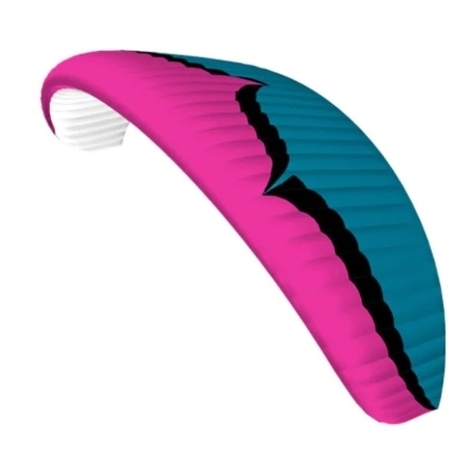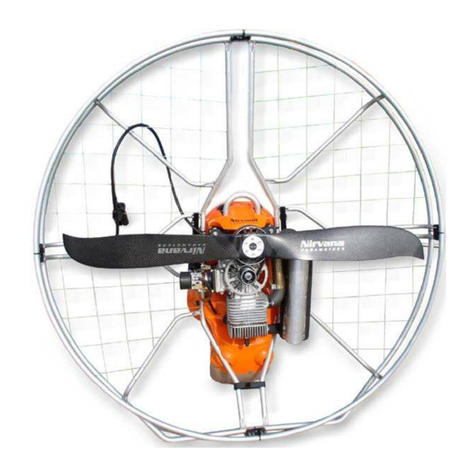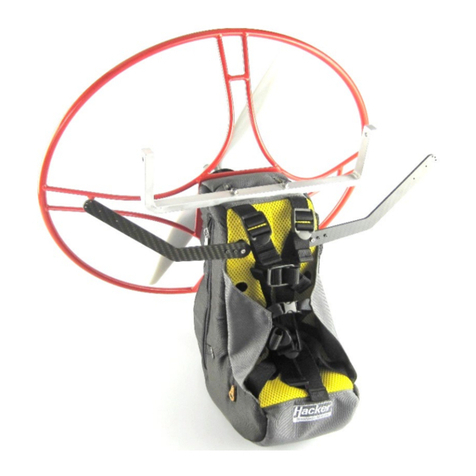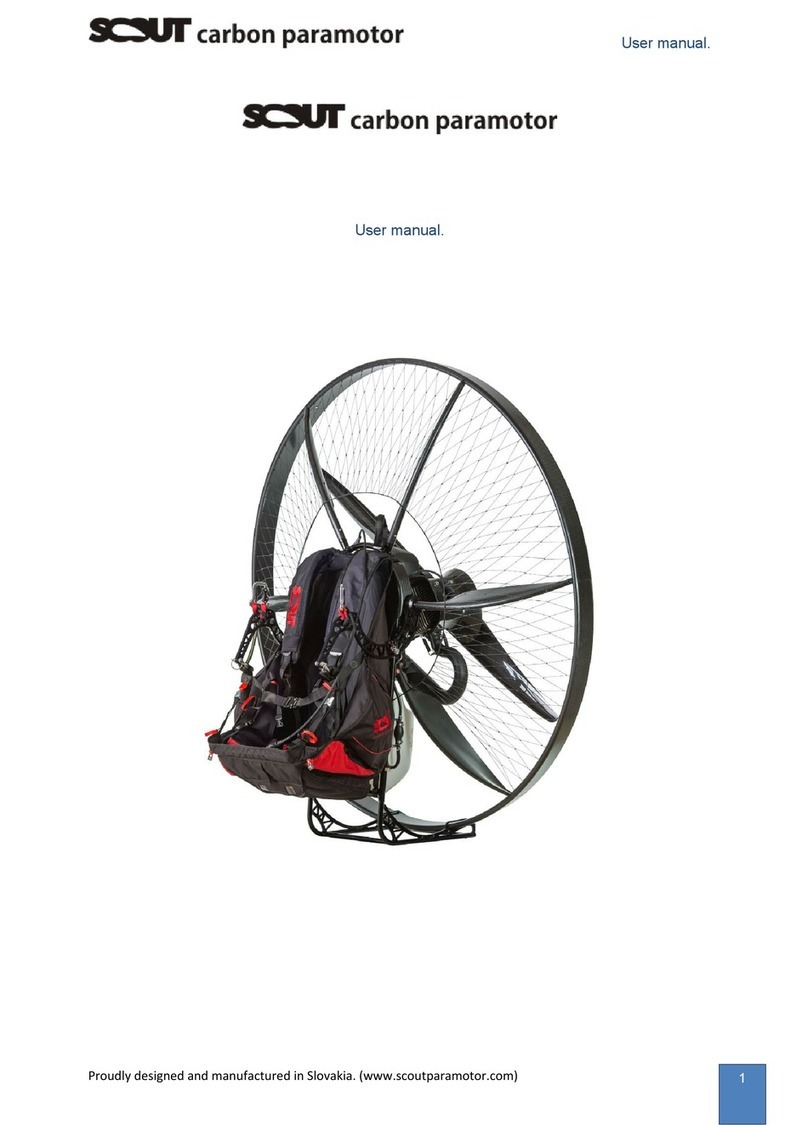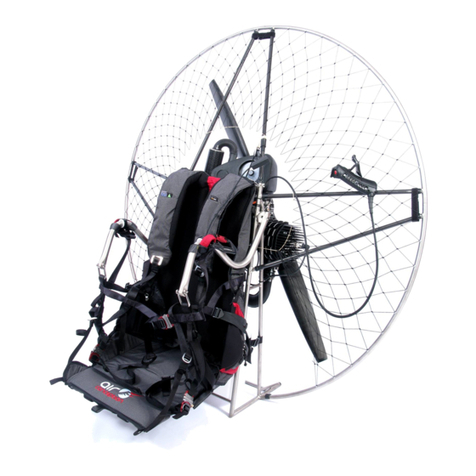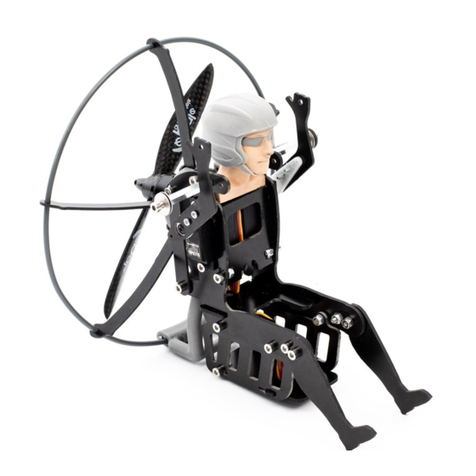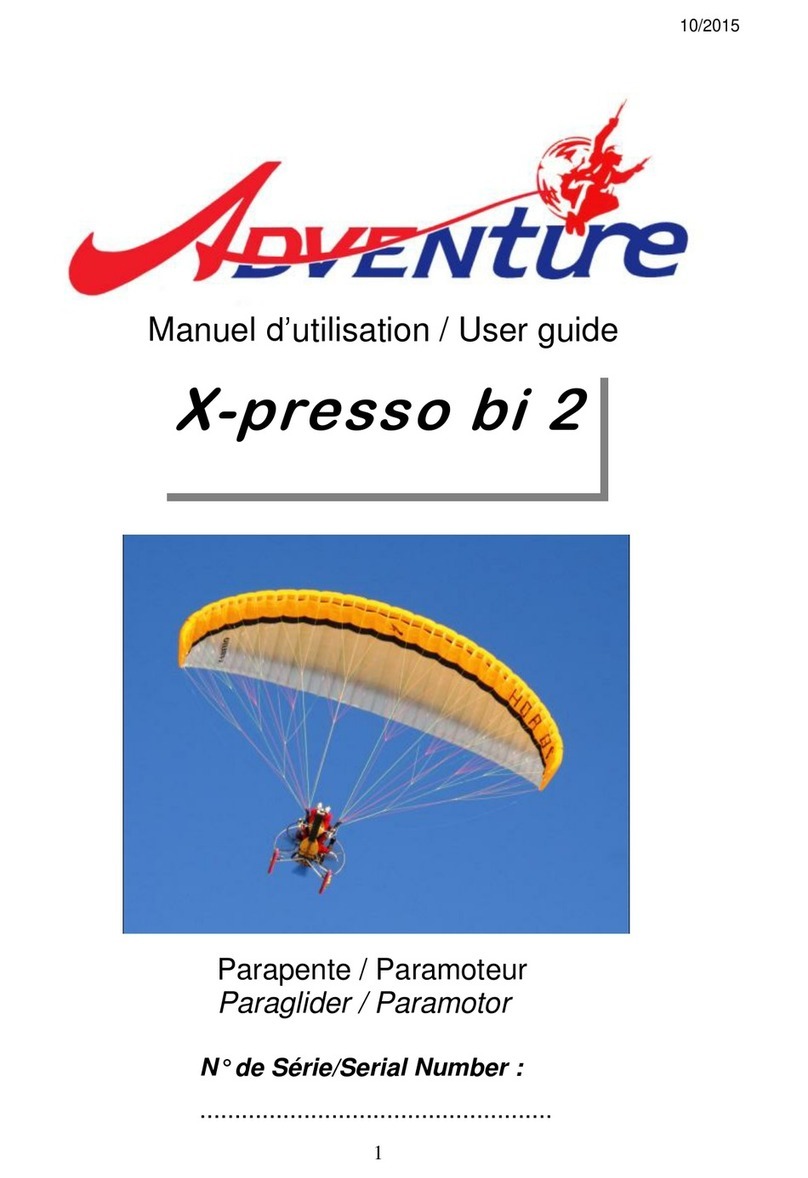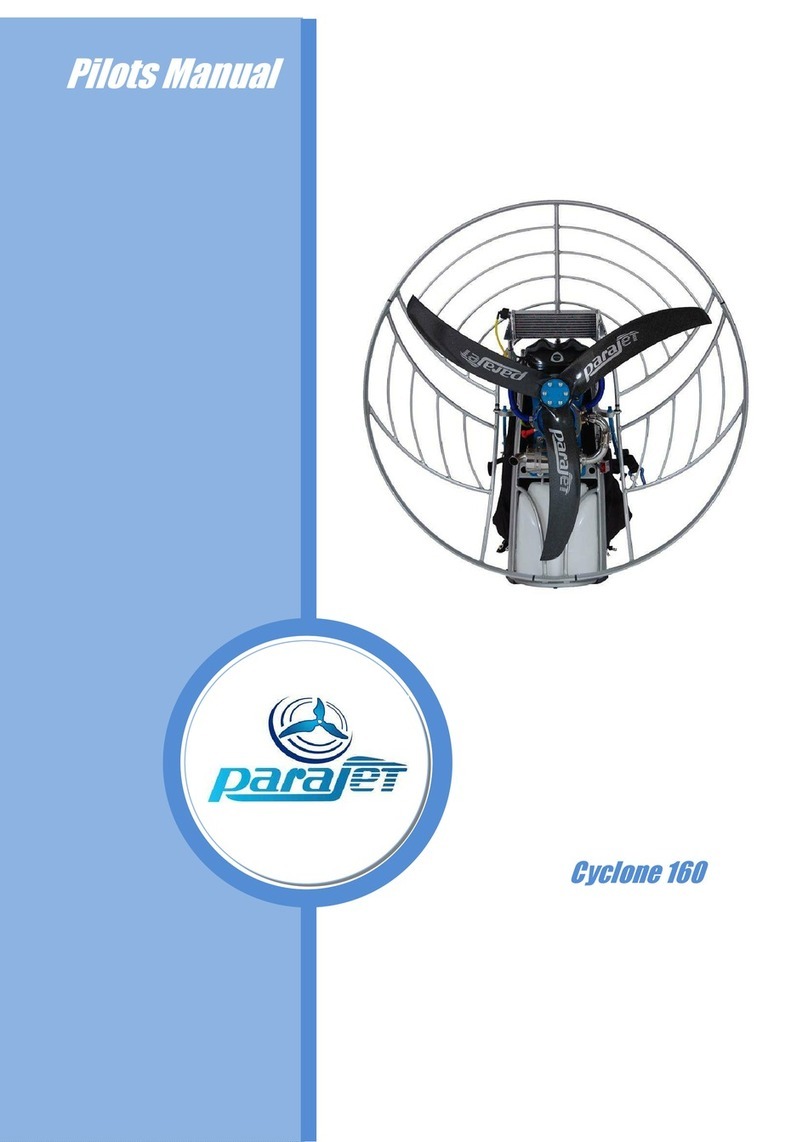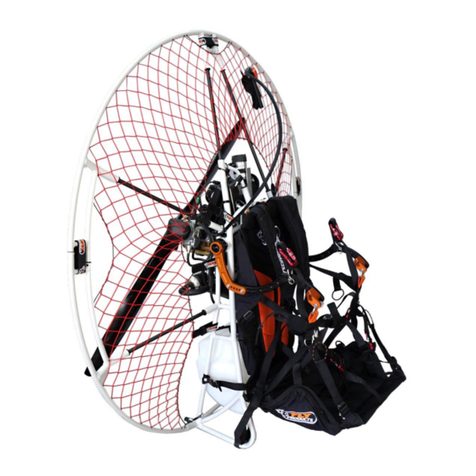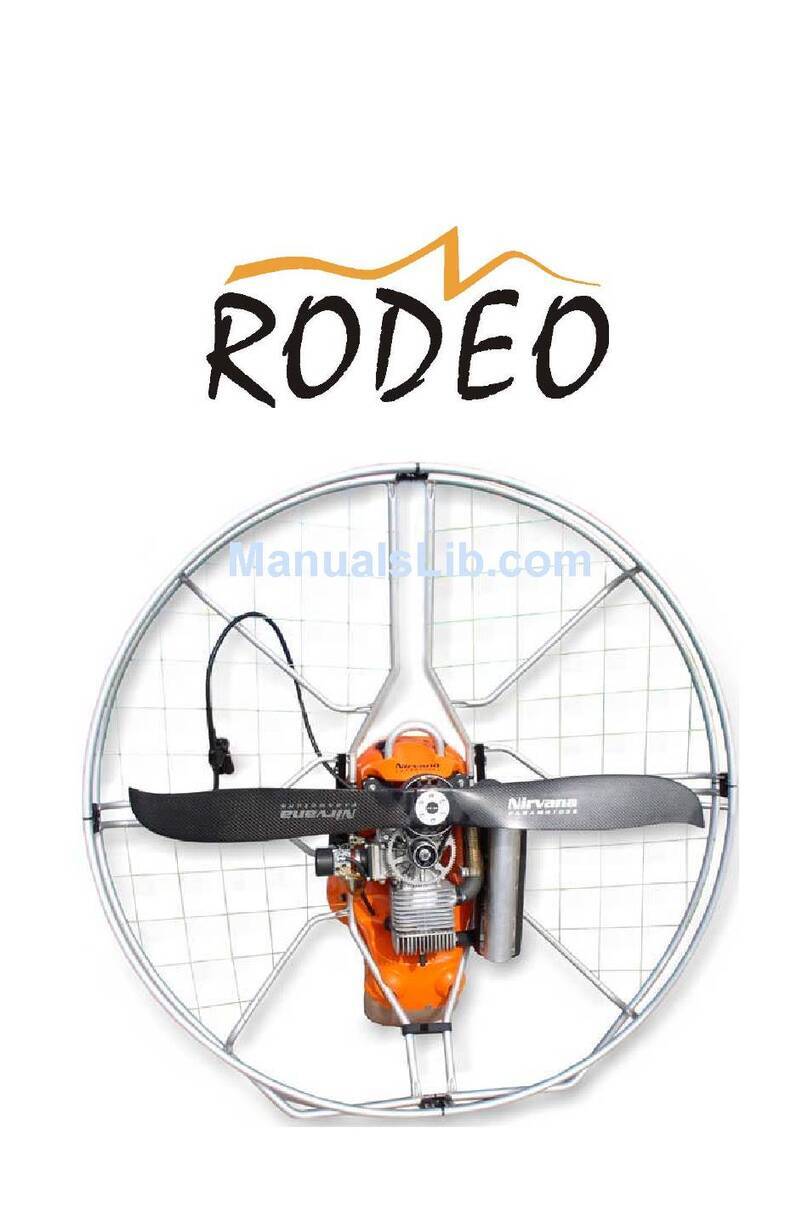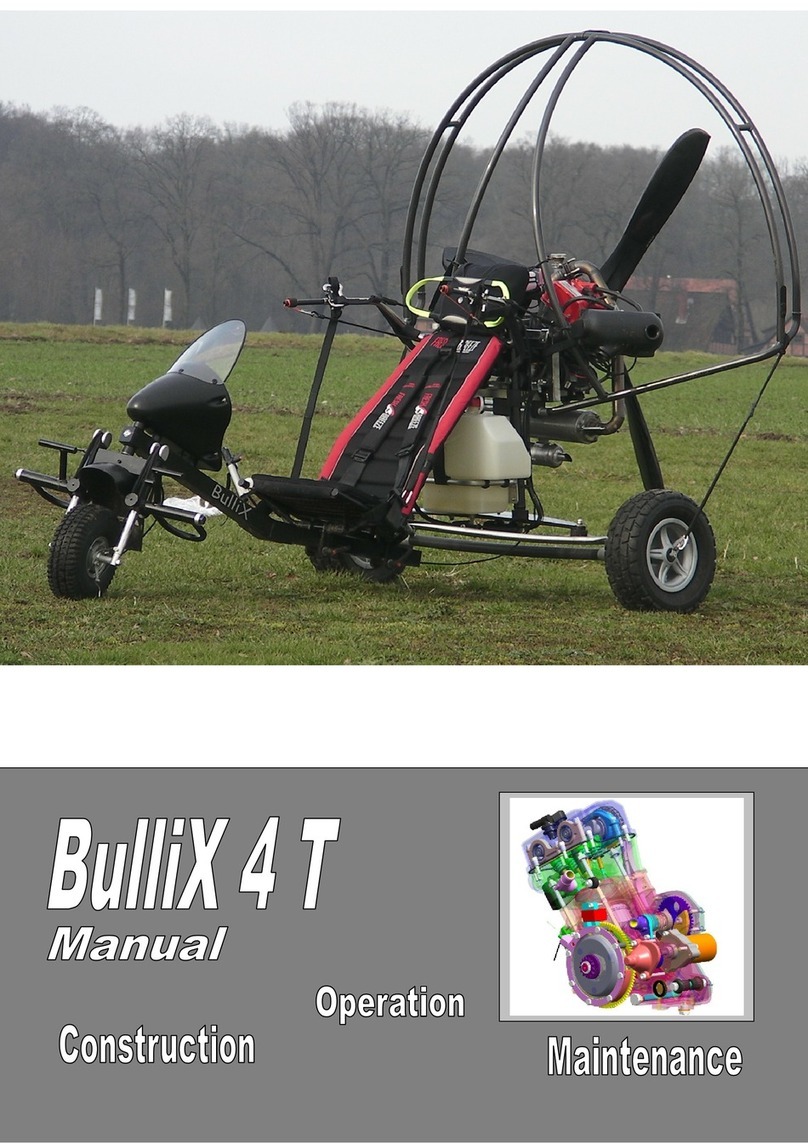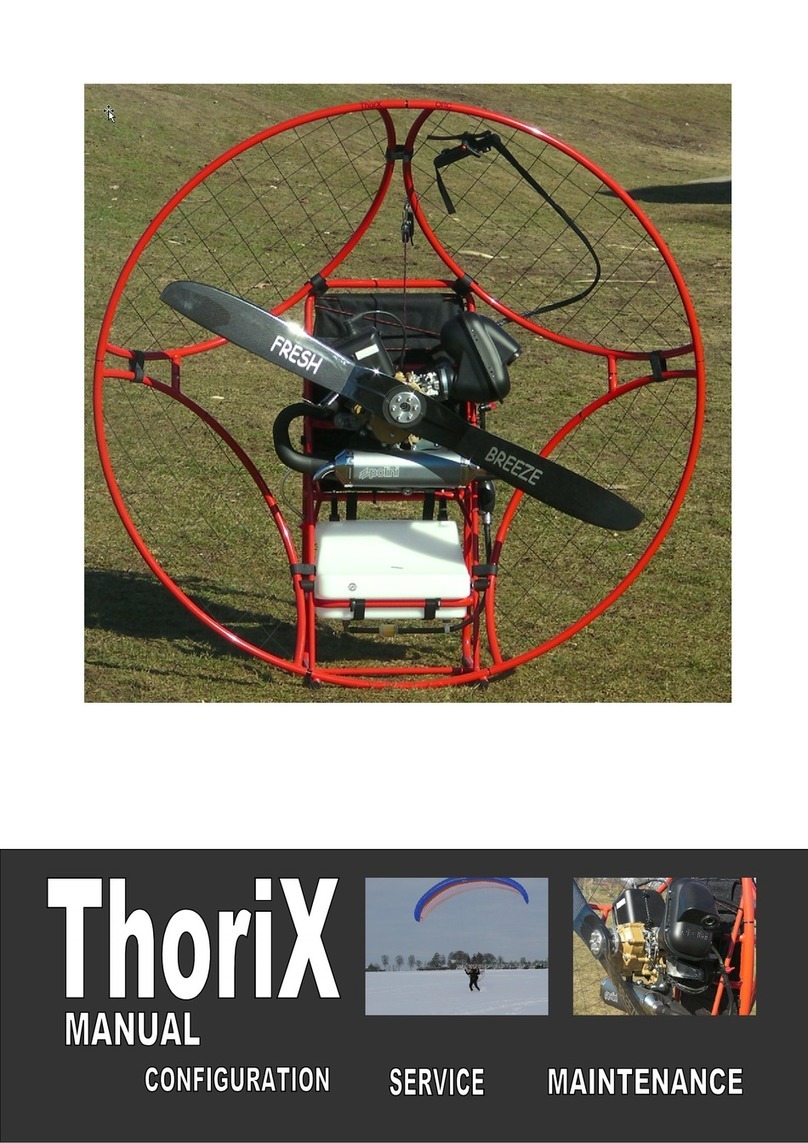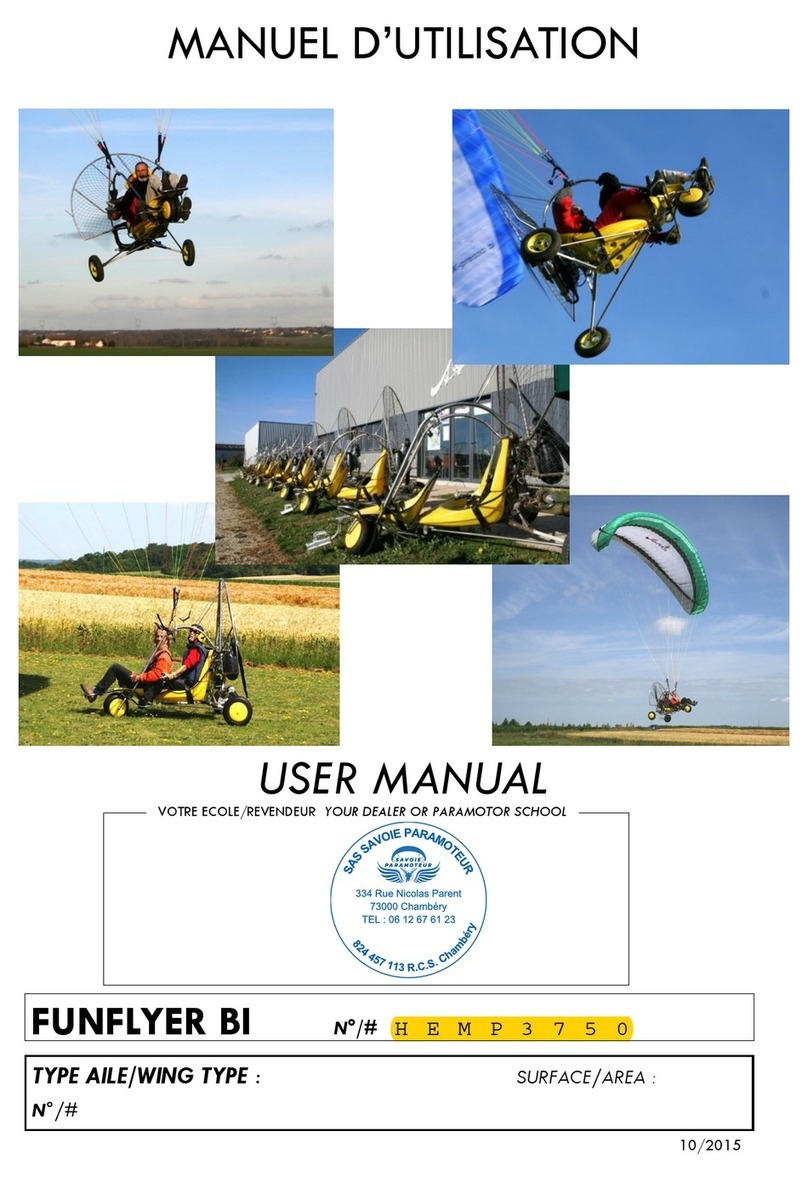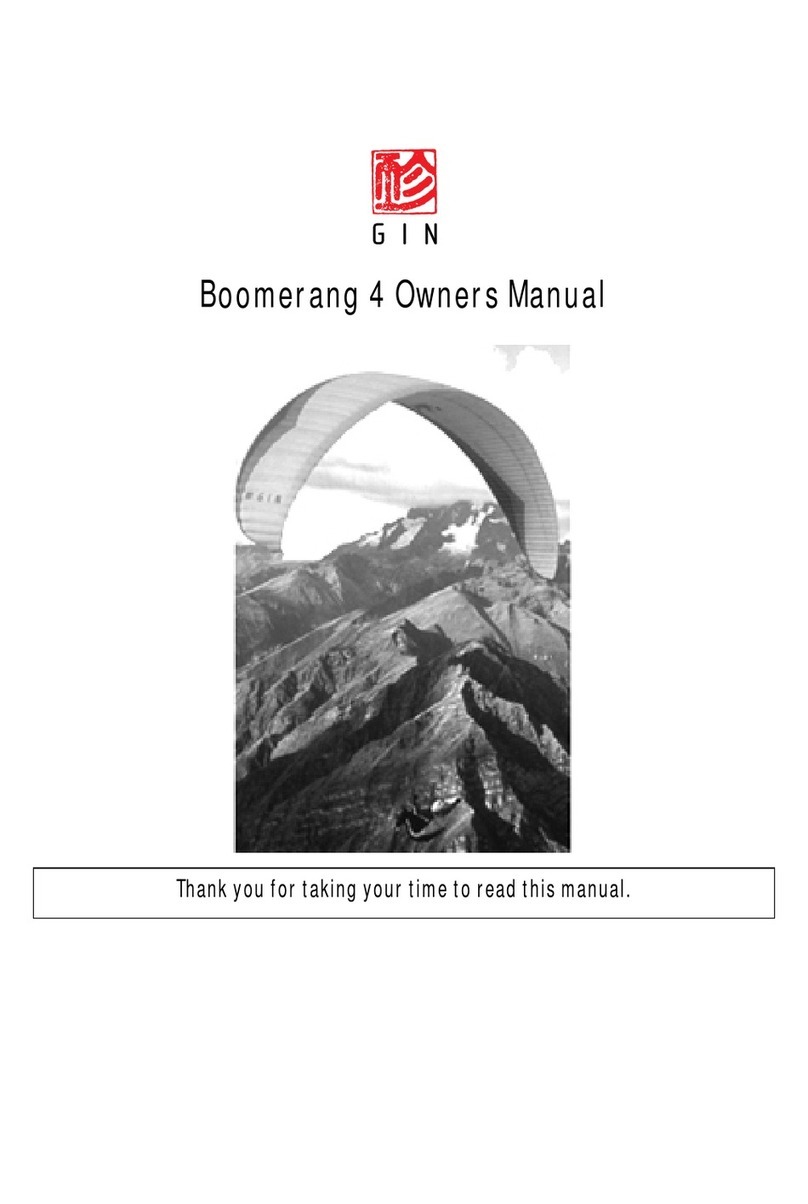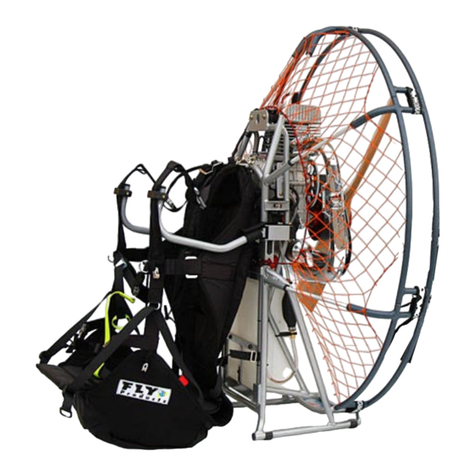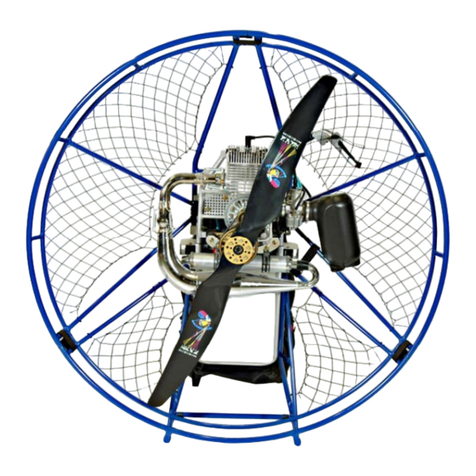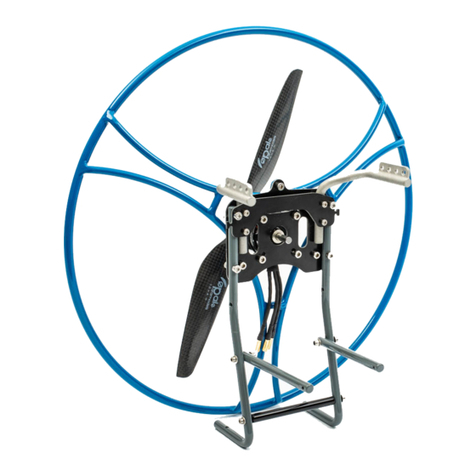
This manual has been compiled to provide pilots
and instructors with information contributing to the
safe and efficient operation of this paratrike. Apart
from important statutory information, this manual
also contains additional information provided by the
motor paraglider manufacturer.
To fly this air vehicle, you need to have the pilot’s
licence for motor paragliders. In addition, it is only
permitted to start and land at approved landing
places. Flights outside the uncontrolled flight space
require a permit, which is mostly requested and
granted via radio.
Further legal requirements such as taking out third
party liability insurance have to be observed. The
pilot has to acquaint himself with the particular
properties and peculiarities of the motor paraglider
prior to starting a flight.
It is compulsory to read the manuals and operating
instructions and to become acquainted with motor,
equipment and all other particulars. It is not permitted
to perform air acrobatics with this motor paraglider.
The legal basis for the operation of ultralight para-
gliders is governed by air traffic laws. Particulars
may be gathered from the associated ordinances.
The provisions and requirements contained therein
have to be observed during operation. The Snap has
been designed, constructed, tested and approved
in accordance with the airworthiness requirements
for motor paragliders. The DULV (German Ultralight
Flight Association) is responsible in this respect.
PRECAUTIONS
Read the flight safety messages in the different
publications, for instance:
Aviation journals
Aviator pocket diaries
News for aeronauts (NfLf)
Federal Aviation Office (LBA) and Federal
Office for Flight Safety (BFS) communications, etc.
Do not carry out any flights during turbulent weather
conditions as a paraglider in principle only obtains
its shape because of its internal pressure. This
internal pressure can only be maintained during
normal oncoming flow conditions.
Exercise particular caution in case there is a
thunderstorm tendency. At any rate, avoid to fly too
close to the storm front to prevent being sucked
into the cloud. In case of emergency, carry out an
off-field landing. Obtain information about low level
flight zones of military aircraft and avoid these.
INTRODUCTION
03
SNAP
MANUAL
